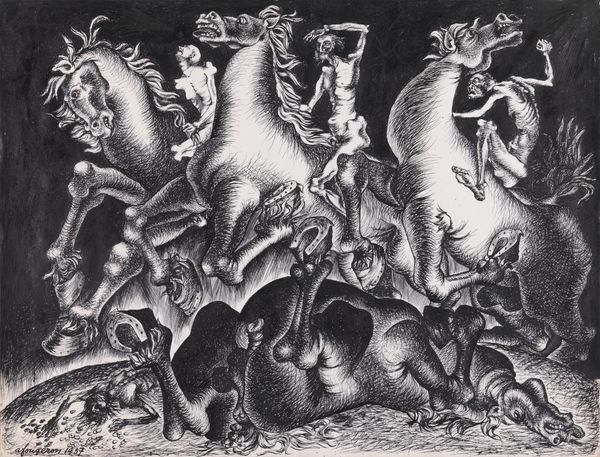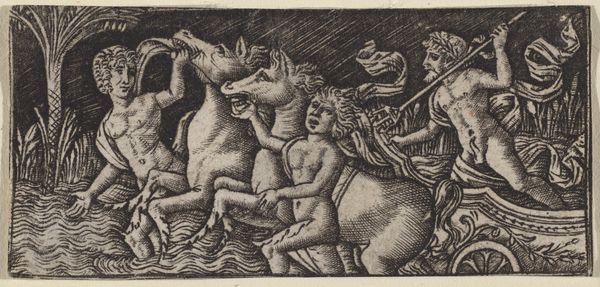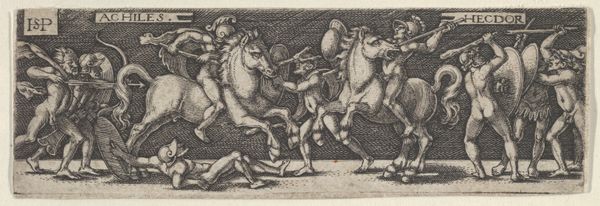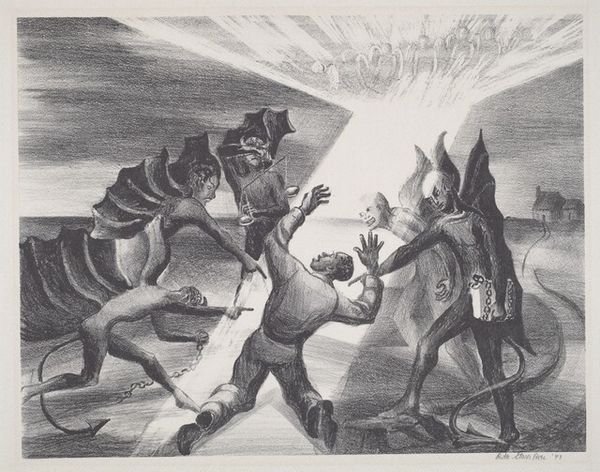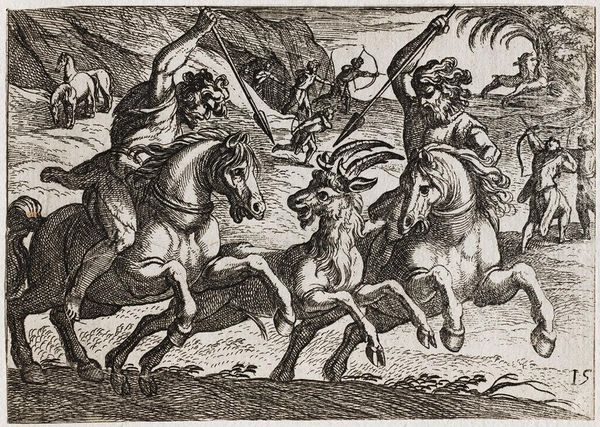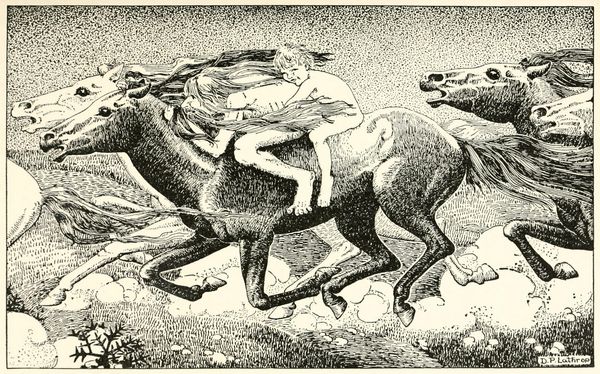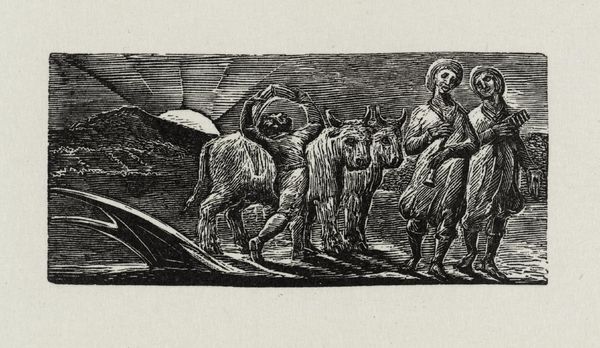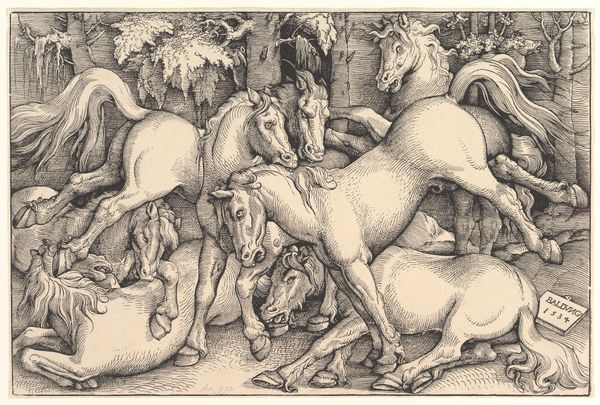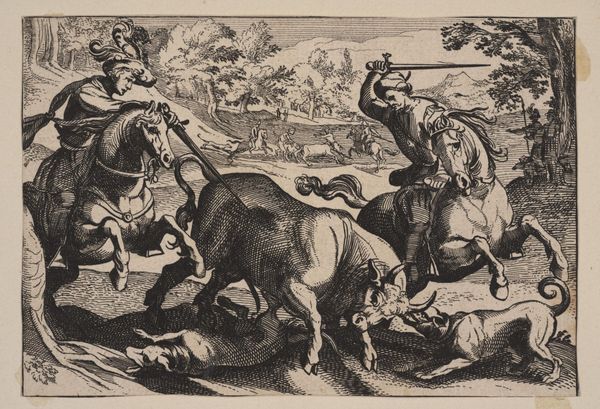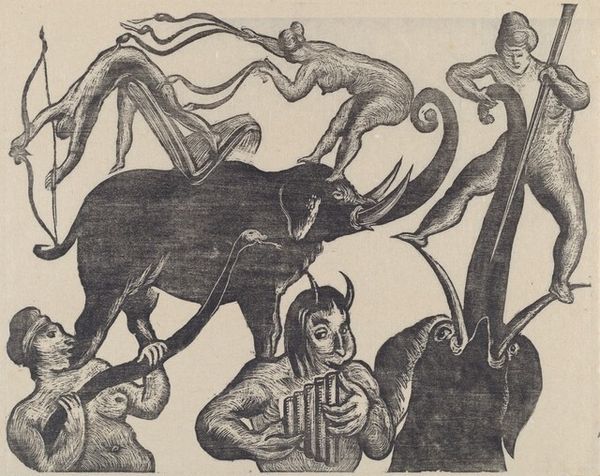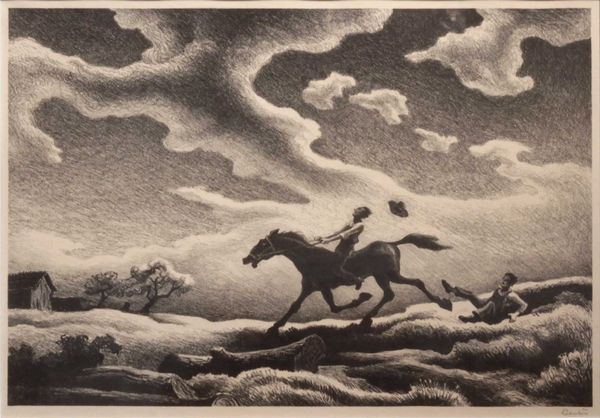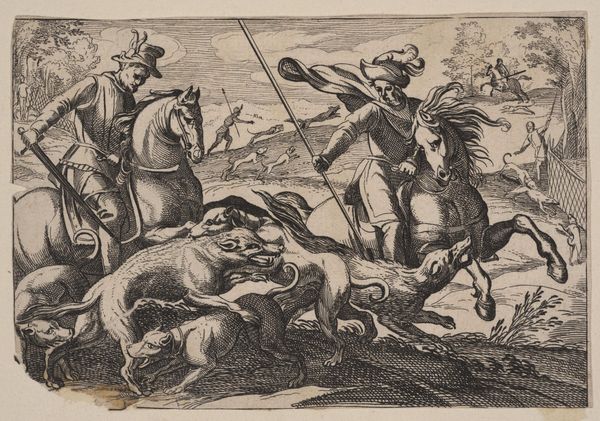
Dimensions: support: 444 x 588 mm
Copyright: © The estate of the André Fougeron | CC-BY-NC-ND 4.0 DEED, Photo: Tate
Editor: This is André Fougeron's print, "The Tournament." The dark, swirling lines give it a chaotic feel. What strikes you most about this work? Curator: I see a powerful critique of societal structures embedded within this seemingly historical scene. Fougeron’s distorted figures and violent imagery can be interpreted as a commentary on the brutality of power dynamics and the spectacle of conflict, don’t you think? How does that impact your initial reading? Editor: That reframes it completely. I was only thinking of knights and horses. Curator: Exactly! By understanding Fougeron's sociopolitical lens, we can see this tournament less as a game and more as a symbol of broader struggles. Editor: So, it's not really about the tournament at all? Curator: It’s about what the tournament *represents*. It allows us to confront uncomfortable truths about the systems we inhabit. I learned that Fougeron’s choice to depict this scene suggests a deeper unease with power structures. Editor: I’ll definitely think about that. Thanks.
Comments
tate 6 months ago
⋮
http://www.tate.org.uk/art/artworks/fougeron-the-tournament-t07708
Join the conversation
Join millions of artists and users on Artera today and experience the ultimate creative platform.
tate 6 months ago
⋮
André Fougeron's drawings of 1937 are powerful and politically charged. The Tournament, like The Four Horsemen and Homage to Franco!!! (Tate T07707, T07709), was made after his commitment to the Socialist Realist style proposed by the International Communist Party. The Spanish Civil War, which broke out in 1936 and which seemed to signal the advance of totalitarian fascism in Europe, provided a range of extreme subject matter through which this realism could be tested. Like many intellectuals in Paris, Fougeron was deeply concerned with the conflict. The unwillingness of the Popular Front government in France to intervene to help its equivalent in Spain caused widespread dismay, and resulted in volunteers travelling to fight for the Republic in the International Brigade. The sense of urgency was heightened by the support lent by Fascist Italy and Nazi Germany to the Falangists led by General Francisco Franco (1892-1975). Fougeron himself recalled that he debated giving up painting in order to fight in Spain (Paris-Paris, 1981, p.50). While The Four Horsemen offers a more general view of destruction, the similar treatment of The Tournament is recognisably concerned with Spain. Fougeron adapts the drama of the bullfight to provide an image of mutual destruction. In place of the battle between bull and fighter, he sets two picadors against each other. The horses rear and scrabble on the sand as the figure on the left, already decapitated and pierced, impales his opponent in the stomach and through his horse's neck. The ghostly spectators above recoil at this savagery. The taut pen and ink makes the darkened combatants stand out in high contrast to the ground. Just as in Fougeron's contemporary canvas Martyred Spain (T07703), the dying horse becomes closely identified with Spain itself. The bellowing heads of Fougeron's horses recall the fragmented horse in Guernica, the mural that Pablo Picasso (1881-1973) exhibited at the Paris Exposition internationale of 1937. The conceit of depicting Spain through its familiar ritual of the arena has resonances in the contemporary work of André Masson (1896-1987). It also recalls the prints of the great Spanish painter Francisco Goya (1746-1828), whose highly charged imagery was a measure of the potential for Socialist Realism in the late 1930s. This was the theme taken up by the communist critic Louis Aragon (1897-1982) when he wrote of the 'destiny of figurative art' resting in Fougeron's drawings (Aragon 1981, p.72). Further reading:Louis Aragon, 'Preface', Dessins de Fougeron, Paris 1947, reprinted in Ecrits sur l'art moderne, Paris 1981, pp.67-72, reproduced p.68 André Fougeron, 'André Fougeron se souvient …', in Paris-Paris, exhibition catalogue, Musée national d'art moderne, Centre George Pompidou, Paris 1981, pp.50-1 Matthew GaleAugust 2001
